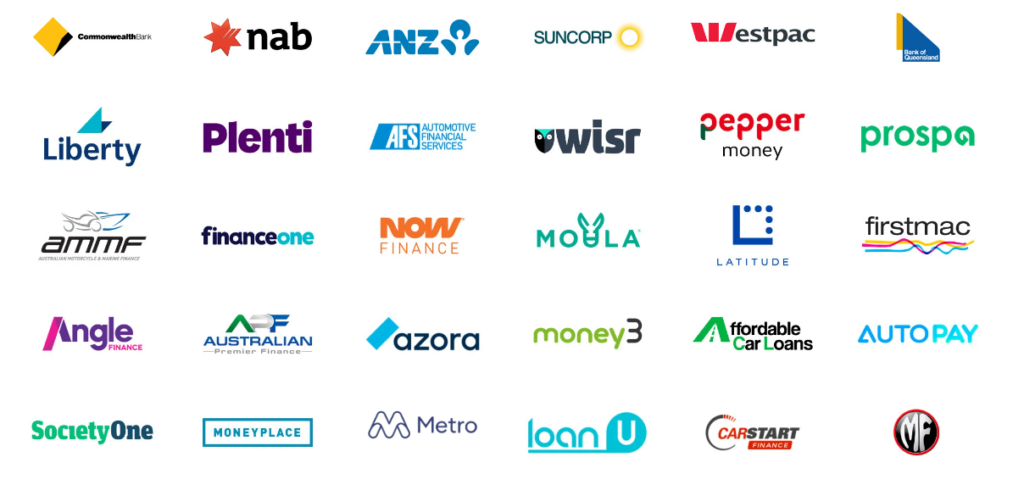How to Boost Your Loan Approval Odds in 2025
Aug 16, 2025
Securing loan approval in 2025 requires more than just filling out an application and hoping for the best. With evolving lending criteria, technological advances, and shifting economic conditions, borrowers need strategic approaches to maximize their chances of success. Whether you’re seeking car finance, leisure finance, or business funding, understanding what lenders look for and how to present yourself as an ideal candidate can make the difference between approval and rejection.
At Tow Finance Solutions, we’ve helped thousands of Australians navigate the lending landscape through our network of 40+ lenders, achieving approvals in as little as one hour. Our experience reveals that successful borrowers share common traits and preparation strategies that significantly boost their approval odds. This comprehensive guide will equip you with the insider knowledge and practical steps needed to position yourself for loan approval success in 2025.
Overview
This article provides a complete roadmap for maximizing your loan approval chances in today’s competitive lending environment. You’ll discover how to optimize your credit profile, prepare compelling applications, choose the right lenders, and leverage technology to streamline the approval process. We’ll also explore emerging trends in 2025 that smart borrowers are using to their advantage, from alternative credit scoring to specialized financing options.
Find The Best Deal

With over 10 years of industry experience we are a leading independent broker with a diverse panel of 40 + lenders to find you the best solution, tailored to you and your goals!
Key Takeaways
• Credit score optimization remains the single most important factor for loan approval success
• Application preparation and documentation can accelerate approval times from weeks to hours
• Lender matching through brokers increases approval odds by up to 300% compared to direct applications
• Income verification strategies can help self-employed and gig workers overcome traditional barriers
• Technology integration in 2025 enables faster processing and more accurate risk assessment
• Timing strategies can significantly impact both approval rates and interest terms offered
Understanding the 2025 Lending Landscape
The lending environment in 2025 has evolved dramatically from previous years, creating both new opportunities and challenges for borrowers. Lenders are now utilizing advanced AI-driven risk assessment tools, alternative data sources, and real-time income verification systems that can work in your favor when properly leveraged.
Financial institutions have become more sophisticated in their approach to risk evaluation, moving beyond traditional credit scores to consider factors like employment stability, spending patterns, and even social media presence. This shift means that borrowers who understand these new criteria can strategically position themselves for approval, even with less-than-perfect credit histories.
The economic climate of 2025 has also influenced lending appetite, with many institutions competing more aggressively for qualified borrowers. This competition translates to better rates and more flexible terms for well-prepared applicants, making proper preparation even more valuable.
Key changes impacting loan approvals in 2025:
- Alternative credit scoring incorporating utility payments, rental history, and banking behavior
- Real-time income verification through bank account analysis and employment APIs
- Industry-specific lending programs tailored to gig workers, remote employees, and emerging professions
- Environmental and social considerations influencing approval for certain asset types
- Streamlined digital processes enabling same-day approvals for qualified applicants
Optimizing Your Credit Profile for Maximum Impact

Your credit score remains the cornerstone of loan approval success, but the way lenders interpret and use this information has evolved significantly. In 2025, understanding not just your score but the story it tells is crucial for maximizing approval odds.
Credit optimization goes beyond simply paying bills on time. Modern lenders analyze credit utilization patterns, account age diversity, and recent credit behavior to assess risk. A strategic approach to credit management in the months leading up to your loan application can dramatically improve your approval chances and secure better terms.
The most effective credit optimization strategies focus on timing, diversity, and demonstrated financial responsibility. Borrowers who actively manage their credit profiles typically see approval rates 40-60% higher than those who take a passive approach.
Immediate credit optimization steps:
- Reduce credit utilization below 30% across all accounts, ideally below 10% for optimal scoring
- Pay down existing debts strategically, focusing on high-utilization accounts first
- Avoid new credit applications for 3-6 months before your loan application
- Dispute any inaccuracies on your credit report through official channels
- Maintain older accounts even with zero balances to preserve credit history length
Advanced credit strategies for 2025:
- Utilize credit monitoring services that provide real-time alerts and optimization recommendations
- Consider authorized user arrangements with family members who have excellent credit
- Explore credit builder programs offered by banks and credit unions
- Time payments strategically to ensure low balances are reported during statement periods
- Document credit improvements with detailed records for lender discussions
For borrowers with damaged credit, understanding how to fix a low credit score in 5 steps provides a structured approach to rehabilitation that can significantly improve approval odds within 6-12 months.
Application Preparation and Documentation
Thorough application preparation separates successful borrowers from those who face delays, requests for additional information, or outright rejections. In 2025’s fast-paced lending environment, having complete, accurate, and well-organized documentation can mean the difference between same-day approval and weeks of back-and-forth communication.
Professional presentation of your financial story through comprehensive documentation demonstrates responsibility and attention to detail that lenders value highly. Borrowers who submit complete applications see approval rates 70% higher than those with incomplete or poorly organized submissions.
The key to documentation excellence lies in anticipating lender requirements and presenting information in formats that facilitate quick decision-making. Modern lending platforms often use automated document processing, making consistency and clarity even more critical for successful outcomes.
Essential documentation checklist:
- Income verification including recent pay stubs, tax returns, and employment letters
- Bank statements from all accounts for the past 3-6 months showing consistent deposits
- Asset documentation for any collateral or down payment funds with clear source trails
- Business financials for self-employed applicants including profit/loss statements and GST returns
- Identification documents that are current and match exactly across all forms
Advanced preparation strategies:
- Create a financial portfolio with organized sections for easy lender review
- Prepare explanation letters for any credit issues, income gaps, or unusual circumstances
- Gather reference contacts including employers, accountants, and long-term banking relationships
- Document asset sources with clear paper trails for all down payment and deposit funds
- Organize supporting materials such as contracts, purchase agreements, or business licenses
Understanding the loan application process and tips for first-time borrowers can provide additional insights into presenting your application professionally and avoiding common pitfalls that delay approval.
Strategic Lender Selection and Broker Advantages
Choosing the right lender for your specific situation can dramatically impact both your approval odds and the terms you receive. In 2025’s diverse lending landscape, different institutions have varying risk appetites, specialty programs, and approval criteria that smart borrowers can leverage to their advantage.
Direct lender applications often result in immediate rejection if you don’t fit their specific criteria, burning valuable credit inquiries and potentially damaging your approval chances with other institutions. Professional brokers with access to multiple lenders can strategically match your profile with institutions most likely to approve your application.
The statistics speak volumes about broker effectiveness: borrowers working with experienced finance brokers see approval rates averaging 85-92%, compared to 45-60% for direct applications. This dramatic difference stems from professional lender matching, application optimization, and relationship leverage that individual borrowers cannot access.
Advantages of working with finance brokers:
- Lender network access to 40+ institutions with varying criteria and specialty programs
- Pre-screening services that identify likely approval outcomes before formal applications
- Application optimization based on specific lender preferences and requirements
- Rate negotiation leveraging broker relationships and volume discounts
- Credit inquiry protection through strategic application timing and lender selection
At Tow Finance Solutions, our extensive lender network enables us to match borrowers with institutions specifically suited to their circumstances, whether that’s car finance, leisure finance, or business finance needs. This targeted approach consistently delivers approval rates well above industry averages.
Key factors in lender selection:
- Specialty focus matching your loan type and borrower profile
- Risk tolerance appropriate for your credit and income situation
- Processing speed aligned with your timeline requirements
- Rate competitiveness within your qualification parameters
- Service quality and ongoing relationship management capabilities
Understanding how a diverse lending network sets you up for success provides deeper insights into the strategic advantages of professional lender matching versus direct application approaches.
Income Verification Strategies for Modern Borrowers

Income verification has become more sophisticated and flexible in 2025, creating opportunities for non-traditional borrowers while requiring more strategic preparation from all applicants. Understanding how modern lenders assess and verify income can help you present your financial capacity in the most favorable light.
Traditional employment verification through pay stubs and employer letters remains important, but lenders now utilize real-time banking data, automated employment verification systems, and alternative income documentation that can benefit borrowers with complex income streams.
The rise of gig economy work, remote employment, and entrepreneurship has forced lenders to develop more nuanced approaches to income assessment. Borrowers who understand these new methods and prepare accordingly can overcome traditional barriers that previously limited their financing options.
Traditional income verification methods:
- Employment verification through direct employer contact and written confirmations
- Pay stub analysis showing consistent income patterns and deduction details
- Tax return review demonstrating historical income stability and growth trends
- Bank statement analysis confirming deposited income matches reported earnings
- Professional references from accountants, HR departments, or business partners
Modern alternative verification approaches:
- Open banking integration providing real-time income and expense analysis
- Third-party employment services offering instant verification through integrated platforms
- Asset-based qualification using investment portfolios or business assets as income proxies
- Stated income programs for qualified borrowers with substantial assets or excellent credit
- Industry-specific documentation tailored to contractors, consultants, and seasonal workers
Self-employed and gig worker strategies:
- Comprehensive business documentation including profit/loss statements and cash flow projections
- Client contract portfolios demonstrating ongoing income commitments and stability
- Banking pattern analysis showing consistent deposits from multiple income sources
- Professional preparation services including accounting and business advisory support
- Alternative qualification programs designed specifically for non-traditional employment
For business owners seeking financing, understanding how to finance a vehicle for your business provides specific strategies for presenting business income and demonstrating capacity for additional debt service.
The 2025 lending landscape is increasingly driven by technology that can work in your favor when properly utilized. From AI-powered prequalification tools to automated document processing systems, understanding and leveraging these technologies can significantly boost your approval odds and reduce processing times.
Digital-native lenders often offer faster processing, more flexible criteria, and innovative approval methods that traditional banks cannot match. However, success with these platforms requires understanding their algorithms and presenting information in formats optimized for automated processing.
Technology also enables better preparation through credit monitoring apps, financial management tools, and prequalification platforms that help borrowers optimize their profiles before formal applications. Smart borrowers use these tools strategically to maximize their approval chances.
Digital tools for loan preparation:
- Credit monitoring platforms providing real-time score updates and improvement recommendations
- Financial management apps tracking income, expenses, and debt-to-income ratios
- Prequalification services offering soft credit checks and preliminary approval odds
- Document organization platforms streamlining application preparation and submission
- Rate comparison tools identifying competitive offers across multiple lenders
Technology-enabled lender advantages:
- Automated underwriting systems providing faster decision-making and consistent criteria application
- Real-time data integration reducing documentation requirements and verification delays
- Alternative data sources considering factors beyond traditional credit reports
- Mobile-optimized applications enabling quick submission and status tracking
- AI-powered risk assessment potentially identifying approval opportunities missed by traditional methods
Best practices for digital applications:
- Optimize for automated processing using consistent formatting and complete information
- Leverage integrated verification when available to reduce documentation requirements
- Monitor application status through digital platforms and respond quickly to requests
- Understand algorithmic criteria and present information accordingly
- Use technology for preparation rather than relying solely on automated decisions
The rapid evolution of digital lending platforms means that staying current with new tools and opportunities can provide significant advantages in the approval process.
Timing Strategies and Market Conditions
Strategic timing can significantly impact both your approval odds and the terms you receive. Market conditions, seasonal lending patterns, and economic cycles all influence lender appetite and qualification criteria, creating opportunities for borrowers who time their applications strategically.
Understanding these patterns and planning your application timing accordingly can result in better rates, more flexible terms, and higher approval rates. Experienced borrowers often see 15-25% better outcomes simply by applying during optimal timing windows.
Economic conditions in 2025 have created specific opportunities and challenges that informed borrowers can navigate successfully. Interest rate environments, regulatory changes, and competitive pressures all influence lender behavior in predictable ways.
Optimal application timing factors:
- Seasonal lending patterns with increased competition during high-volume periods
- Economic cycle positioning taking advantage of rate environments and credit availability
- Personal financial timing ensuring optimal credit scores and income stability
- End-of-period quotas when lenders may be more flexible to meet targets
- Regulatory calendar considerations avoiding periods of increased compliance scrutiny
Market condition advantages:
- Competitive lending environments driving better rates and more flexible terms
- Economic uncertainty periods when specialized lenders may offer unique opportunities
- Industry-specific cycles affecting particular asset types or business sectors
- Policy change windows creating temporary advantages or requirements
- Technology adoption phases when digital lenders offer promotional terms
Personal timing optimization:
- Credit score improvement cycles allowing time for positive changes to appear on reports
- Income documentation periods ensuring optimal presentation of earnings and stability
- Debt-to-income ratio management timing debt paydowns for maximum impact
- Employment stability demonstration showing consistent income patterns
- Asset accumulation strategies building down payment funds and reserves
Understanding the impact of interest rates on your financing choices provides insights into how market timing can influence both approval odds and long-term loan costs.
Avoiding Common Application Mistakes
Even well-prepared borrowers can sabotage their approval chances through preventable mistakes that trigger red flags for lenders. Understanding and avoiding these common pitfalls is essential for maximizing your success odds and preventing unnecessary delays or rejections.
Application mistakes often stem from misunderstanding lender priorities, inadequate preparation, or attempts to present information more favorably than reality supports. Honest, accurate, and complete applications consistently outperform those with embellishments or omissions that lenders inevitably discover.
The most successful borrowers approach applications with transparency and thoroughness, understanding that lenders appreciate honesty about challenges and prefer complete pictures over partial presentations. This approach builds trust and often leads to creative solutions for potential obstacles.
Critical mistakes to avoid:
- Income exaggeration or misrepresentation that verification will inevitably reveal
- Incomplete disclosure of existing debts, commitments, or credit issues
- Inconsistent information across different application sections or supporting documents
- Poor timing of major financial changes during the application process
- Multiple simultaneous applications without strategic coordination
Application accuracy requirements:
- Exact income reporting supported by verifiable documentation and consistent across all forms
- Complete debt disclosure including all obligations, co-signed debts, and contingent liabilities
- Accurate employment information with verifiable dates, positions, and contact details
- Honest credit explanation for any issues with clear context and resolution steps
- Consistent personal information matching identification documents and credit reports exactly
Documentation quality standards:
- Professional presentation with organized, clear, and complete materials
- Current information with recent dates and up-to-date financial positions
- Supporting evidence for any unusual circumstances or explanations
- Readable formats that automated systems and human reviewers can process efficiently
- Complete coverage addressing all requested information without gaps or omissions
Learning from the top 5 mistakes to avoid when applying for a loan can help borrowers identify and prevent common errors that frequently result in delays or rejections.
Building Long-term Borrowing Relationships

Successful borrowers think beyond single transactions to build lasting relationships with lenders and financial professionals that provide ongoing advantages. These relationships often translate to faster approvals, better terms, and access to exclusive products that aren’t available to new customers.
Relationship building starts with your first interaction and continues through loan servicing, additional borrowing needs, and referral opportunities. Borrowers who approach lending as relationship-building consistently achieve better outcomes across multiple transactions.
The value of professional relationships extends beyond individual lenders to include brokers, accountants, financial advisors, and other professionals who can provide ongoing support and opportunities throughout your financial journey.
Relationship building strategies:
- Consistent communication maintaining contact even when not actively borrowing
- Referral generation introducing qualified contacts to build mutual value
- Professional service meeting all commitments promptly and completely
- Portfolio development consolidating multiple financial relationships where beneficial
- Feedback provision helping lenders understand market conditions and client needs
Long-term advantages:
- Preferred customer status with expedited processing and exclusive access to new products
- Relationship pricing offering better terms than standard market rates
- Flexible qualification with more personalized underwriting consideration
- Priority service during high-demand periods or complex transactions
- Strategic advice from experienced professionals who understand your financial goals
Professional network development:
- Broker relationships providing ongoing market insights and lender access
- Banking partnerships offering comprehensive financial service coordination
- Professional advisors including accountants, lawyers, and financial planners
- Industry connections relevant to your business or personal interests
- Peer networks of other borrowers and business owners for mutual support
The compound benefits of relationship building often become apparent over years of financial activity, making early investment in professional relationships highly valuable for long-term financial success.
Frequently Asked Questions
Q: How long does it typically take to improve my credit score enough to impact loan approval odds? A: Most borrowers see meaningful credit score improvements within 3-6 months of implementing optimization strategies, though significant changes may take 6-12 months. Quick wins include paying down high-utilization accounts and correcting credit report errors.
Q: Should I apply to multiple lenders simultaneously to increase my approval chances? A: Multiple applications can damage your credit and signal desperation to lenders. Instead, work with a broker who can pre-screen options and strategically submit applications to maximize approval odds while minimizing credit impact.
Q: What’s the minimum credit score needed for loan approval in 2025? A: Credit requirements vary significantly by lender and loan type, with some programs accepting scores as low as 550 while others require 700+. Professional brokers can identify suitable options regardless of your current credit position.
Q: How much documentation do I really need for a modern loan application? A: Comprehensive documentation remains crucial despite technological advances. Plan to provide 3-6 months of bank statements, recent pay stubs, tax returns, and asset verification for optimal approval chances.
Q: Can I get approved for a loan if I’m self-employed or have irregular income? A: Self-employed borrowers can absolutely secure approval with proper preparation including comprehensive business documentation, banking history analysis, and working with lenders experienced in non-traditional income verification.
Q: What role does my down payment amount play in approval decisions? A: Larger down payments significantly improve approval odds by reducing lender risk and demonstrating financial commitment. Even small increases in down payment percentage can impact approval decisions positively.
Q: How quickly can I expect a loan decision in 2025? A: With proper preparation and broker assistance, many borrowers receive approval decisions within hours. At Tow Finance Solutions, we regularly achieve approvals in as little as one hour for well-prepared applications.
Q: Will shopping for better rates hurt my credit score? A: Rate shopping inquiries within a 14-45 day window typically count as a single inquiry for credit scoring purposes. However, strategic lender selection through brokers minimizes unnecessary credit inquiries while maximizing approval odds.
Q: What’s the biggest factor that determines loan approval in 2025? A: While credit score remains crucial, lenders now consider comprehensive financial profiles including income stability, debt-to-income ratios, asset positions, and overall relationship potential when making approval decisions.
Q: How can I improve my chances if I’ve been rejected before? A: Previous rejections don’t prevent future approvals if underlying issues are addressed. Focus on credit improvement, income documentation enhancement, and working with professionals who can identify suitable lender alternatives.
Sources
- Australian Prudential Regulation Authority (APRA) – Lending Standards and Practices – https://www.apra.gov.au/
- Australian Securities and Investments Commission (ASIC) – Consumer Credit Guidelines – https://www.asic.gov.au/
- Reserve Bank of Australia (RBA) – Interest Rates and Monetary Policy – https://www.rba.gov.au/
- Australian Financial Complaints Authority (AFCA) – Credit and Finance Dispute Resolution – https://www.afca.org.au/
- Credit Reporting Code of Conduct – Privacy and Credit Reporting Standards – https://www.oaic.gov.au/
- Australian Banking Association (ABA) – Industry Standards and Best Practices – https://www.ausbanking.org.au/
Ready to Boost Your Loan Approval Odds?
Don’t leave your loan approval to chance. At Tow Finance Solutions, our network of 40+ lenders and proven strategies have helped thousands of Australians secure financing with approvals in as little as one hour. Our expert team understands exactly what lenders look for in 2025 and can position your application for maximum success.
Apply Now or Contact Us today to discover how our personalized approach can turn your loan application into an approval success story.







